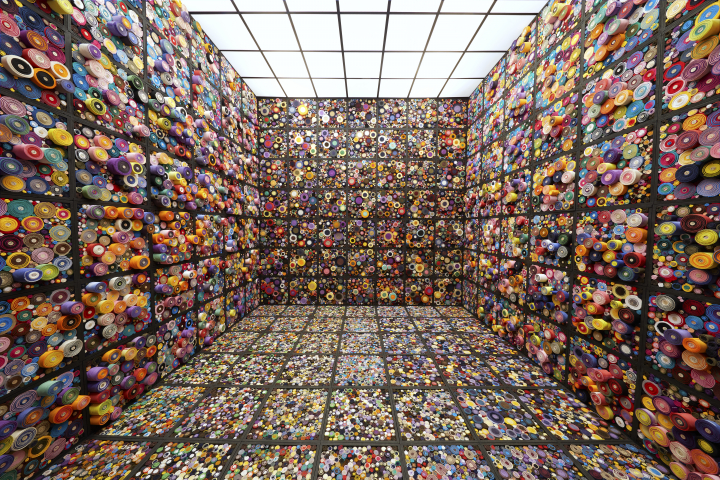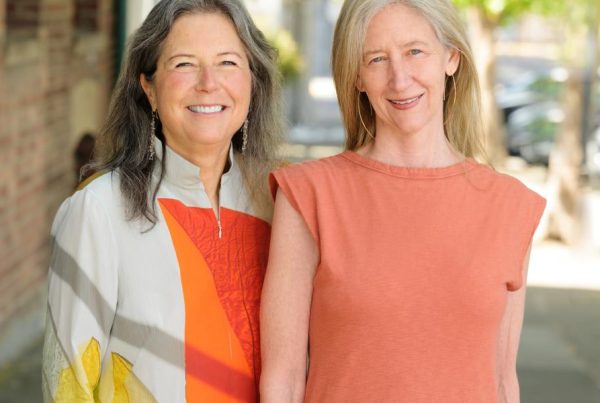DALLAS — Most art exhibitions follow a fairly predictable sensory script. Visitors come, they see art, they leave. (They might listen to an audio, depending on the installation in question.) We generally don’t interact with anything: we don’t poke the art, we don’t take our shoes off and walk on it. And, most significantly, most formal museums and art institutions build in physical distance between art and audience. Touching tends to be transgressive.
speechless: different by design at the Dallas Museum of Art (co-organized with the High Museum of Art in Atlanta) wants to challenge the presumption that this physical distance is needed; it also dares visitors to imagine art primarily as a multisensory experience. The exhibition debuts new works (all 2019) by six international designers (and design teams) that ask audiences to see sound and to embrace language as tactile. To that end, designers Ini Archibong, Matt Checkowski, Misha Kahn, Steven and William Ladd, Laurie Haycock Makela, and Yuri Suzuki provide site-specific installations that fundamentally depend on audience participation. speechless seeks to subvert the passive predictability of art institutions by not only presenting an active experience, but also assuming that visitors will welcome such an inversion of their museum experience.
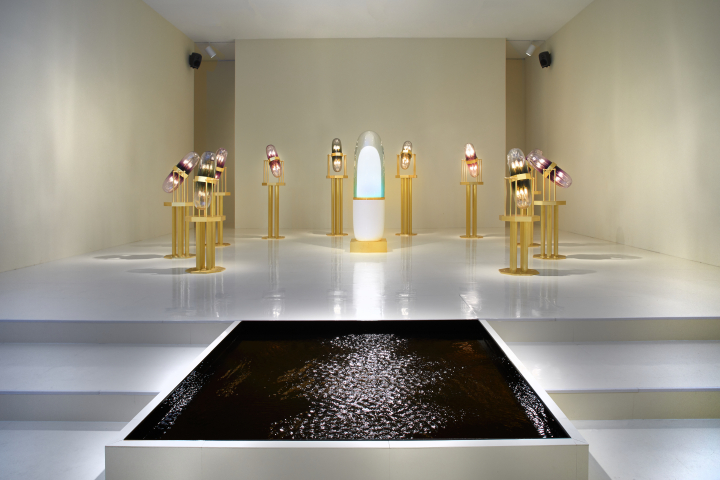
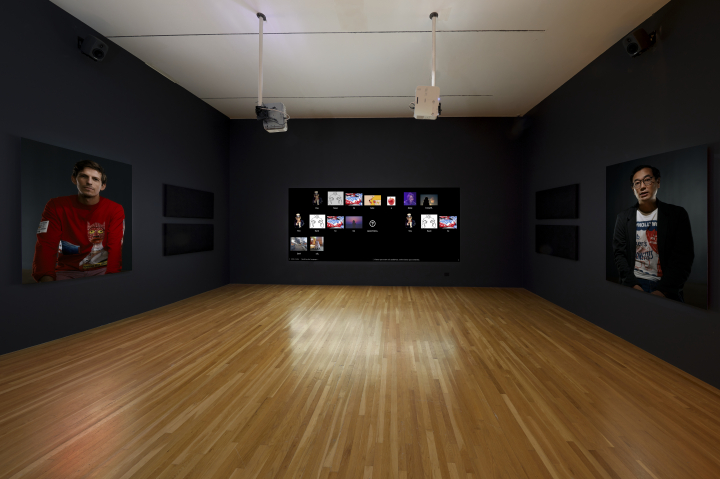
Entering speechless is a bit like walking into a giant nautilus shell. Each chamber curves out away from the center of the space, with a specific installation by an artist or team carefully situated in its own intricate environment. Some of the rooms are dark, like those for Yuri Suzuki’s Sound of the Earth Chapter 2 or Matt Checkowski’s Glyph. Other rooms are brightly lit and vibrant with color, like the tactile room Scroll Space, by Steven and William Ladd, filled with tens of thousands of hand-rolled textile “scrolls” that were made with the help of 1,700 community members in Dallas and Atlanta. In Sound of the Earth Chapter 2, sound is presented as careful, specific, and deliberate. Visitors need to close the physical space between themselves and the dark spherical sculpture in order to hear it “speak” — oracle-like — as they press their ears against the surface of the human-scale sphere. In Glyph, on the other hand, sound is experienced as an ongoing loop of conversations and interviews; the speech from those interviews is then “translated” into images pulled from the internet.
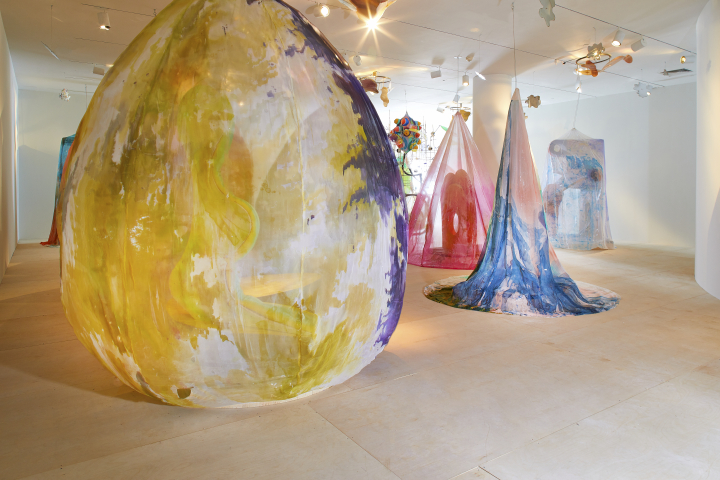
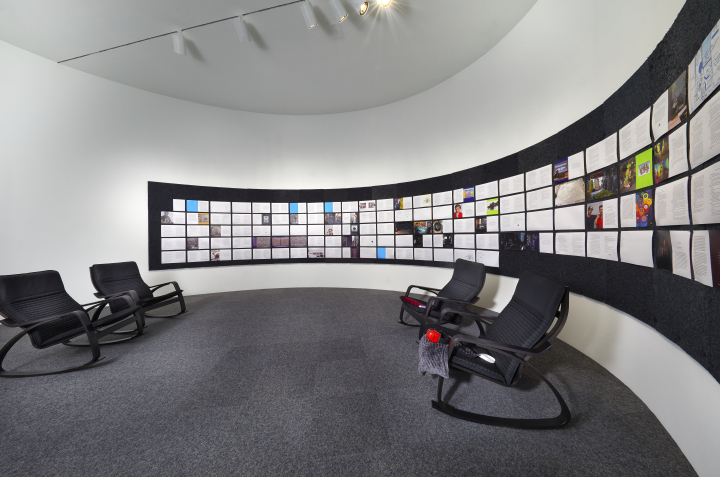
The central theme of speechless is audience participation. Community members made textile scrolls for Scroll Space; the exhibition asks visitors to run their hands over the scrolls recessed in the wall, like a bookshelf in a medieval scriptorium, and wiggle their sock-clad toes over the scrolls in the floor. Anyone can submit audio via the Dallas Museum of Art’s website to be included in Sound of the Earth Chapter 2. Misha Kahn’s billowing garden of “globular silken spider sacs” inflates and deflates throughout the day as museum-goers are encouraged to poke the pieces and even sit on them; given enough time and patience, visitors are literally enveloped by the silks.
speechless is an intense exhibition that walks a fine sensory line. Too much sensory input and audiences could be off-put; too little and it’s not really all that innovative. Consequently, speechless is unrelenting in its demands that visitors interact with the exhibitions. (Sound, for example, travels outside of each piece’s nautilus-chamber and is ever-present in the exhibition experience. The docents helping visitors navigate Theoracle by Ini Archibong were equipped with earplugs.) It can also feel like speechless asks visitors to sense each installation in specific, scripted ways. (Signs queue visitors to show what, exactly, they can touch and what is expected of them.) This helps visitors navigate the unfamiliar terrain of interactive installations. It also this makes participating in the exhibitions feel like it’s more about performativity than sensory discovery.
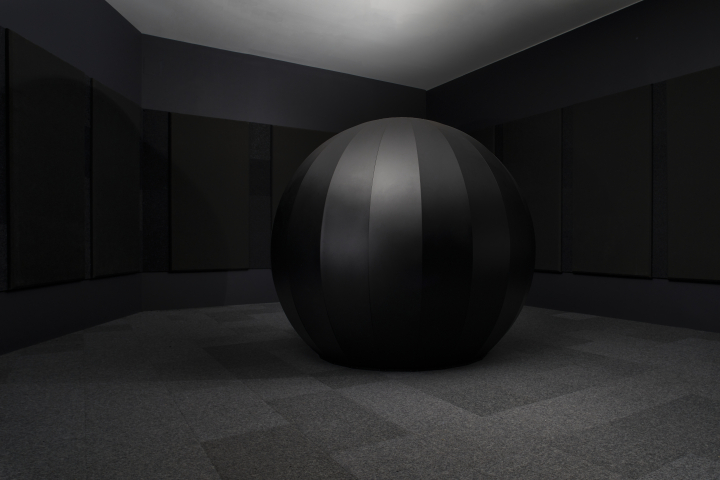
Overall, however, speechless: different by design successfully blends media and environments to prod visitors out of their comfort zones and pique their sensory interest. In speechless, touching — and sensing — art is no longer transgressive; it is transformative.
speechless: different by design continues at the Dallas Museum of Art (1717. North Harwood, Dallas, Texas) through March 22. The exhibition was curated by Sarah Schleuning, Margot B. Perot Senior Curator of Decorative Arts and Design and Interim Chief Curator at the DMA.
Source: Interactive Installations Prod Visitors Out of Their Comfort Zones

